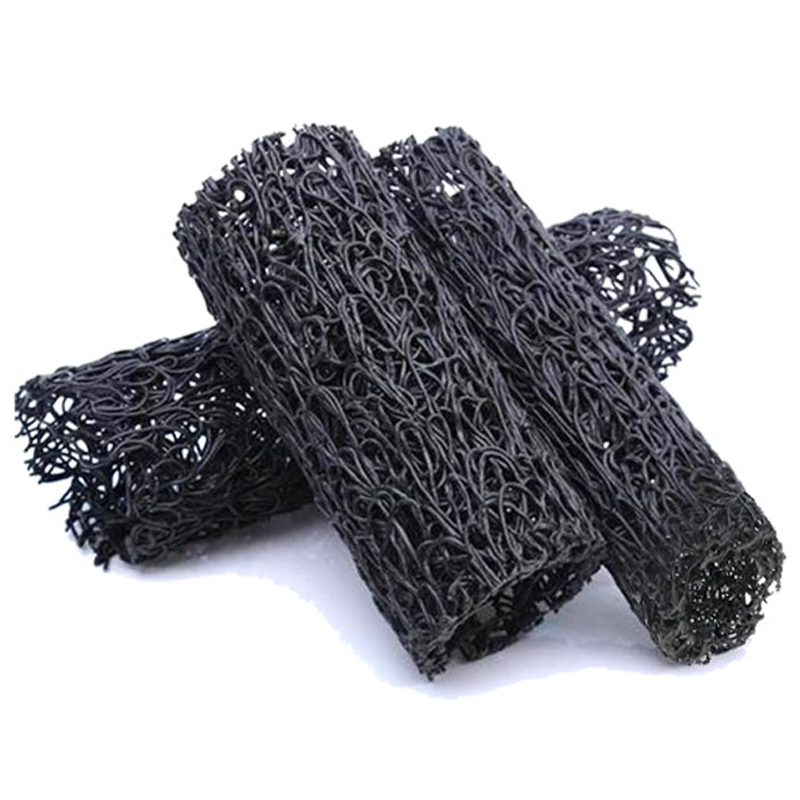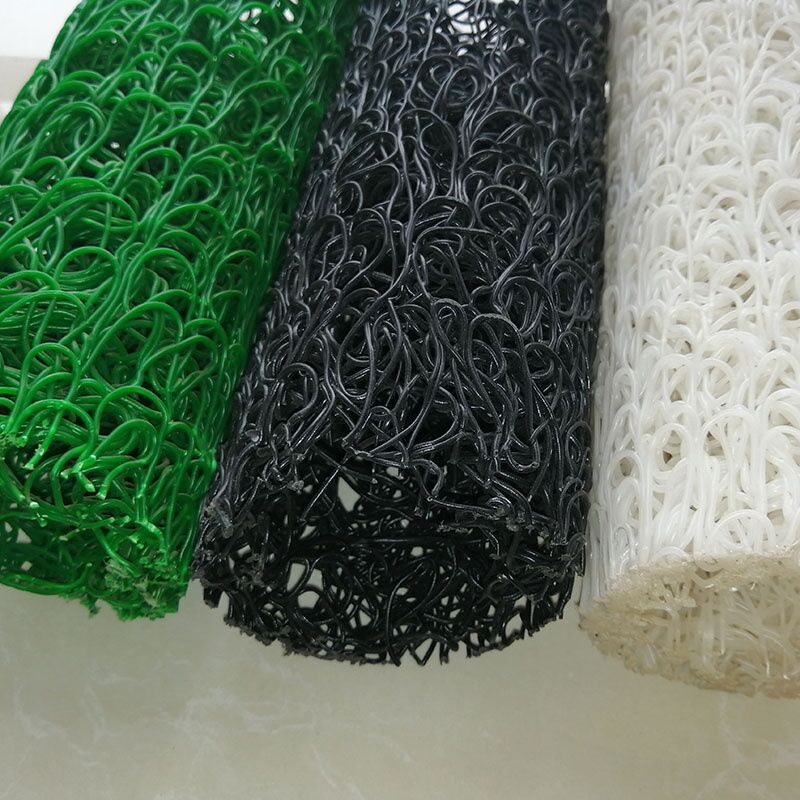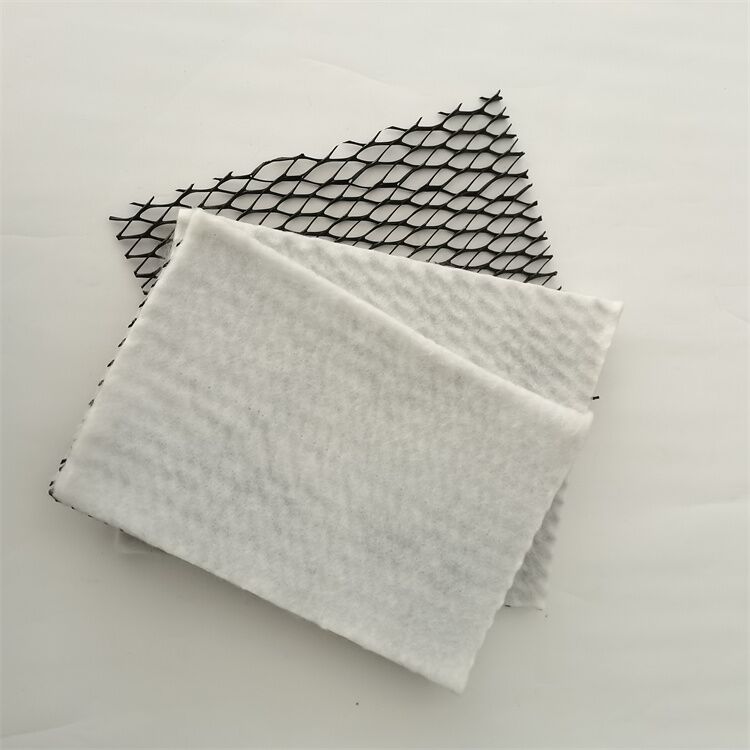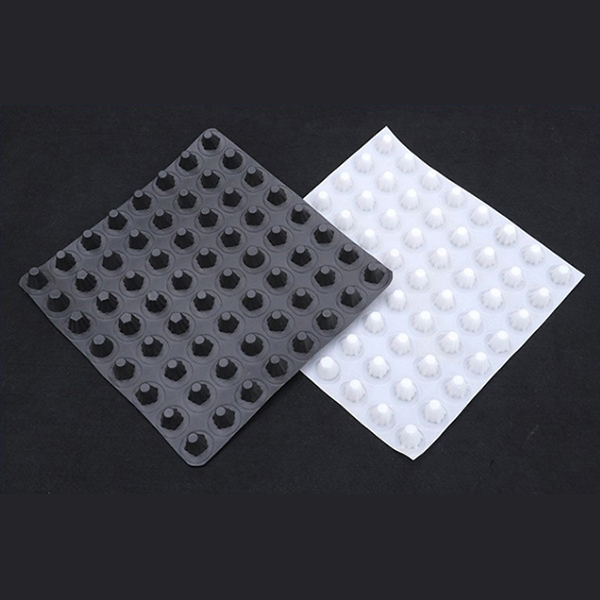Plastic Blind Ditch for Drainage of Tunnels
Products Description:
The plastic blind ditch is composed of a plastic core body wrapped with filter cloth. The plastic core is made of thermoplastic synthetic resin as the main raw material. After modification, in the hot melt state, thin plastic filaments are extruded through the nozzle, and then the extruded plastic filaments are welded at the nodes through the forming device. , Forming a three-dimensional three-dimensional network structure. The plastic core has a variety of structural forms such as rectangle, hollow matrix, circular hollow circle and so on. This material overcomes the shortcomings of traditional blind ditch. It has high surface opening rate, good water collection, large porosity, good drainage, strong pressure resistance, good pressure resistance, good flexibility, adapt to soil deformation, and good durability, Light weight, convenient construction, greatly reduced labor intensity of workers, and high construction efficiency. Therefore, it is generally welcomed by the Engineering Bureau and is widely used.
Features:
1. The constituent fibers of the plastic blind ditch are filaments of about 2mm, which are fused and formed at the mutual joints to form a three-dimensional mesh body. The principle is the same as the principle of the truss of the steel structure. The surface opening is 95-97%, which is more than 5 times that of the porous tube and 3-4 times that of the resin mesh tube. The surface water absorption rate is extremely high.
2. Because it is a three-dimensional structure, its porosity is 80-95%, and the space and management are the same and it is light. The compressive performance is more than 10 times stronger than that of the resin of the pipe structure. Therefore, even if it is compressed due to overload, it is a three-dimensional Because of the structure, the residual voids are also more than 50%, there is no problem of no water flow, and there is no need to consider that it will be crushed by earth pressure.
3. High compressive strength, its compression rate is lower than 10% under 250KPa pressure.
4. With anti-aging agent, it is durable, and it can be stable even if it is placed under water or soil for decades.
5. Compressive resistance and flexibility, it can also be used for curved roads and other curved positions. It is very light. If the backfill depth is about 10cm, it can also be backfilled with a bulldozer.
6. Due to the above characteristics, the various problems that have occurred in the traditional blind ditch in the past, such as uneven settlement or partial occlusion due to overload, and no gaps caused by crushing, can be solved by plastic blind ditch materials. .
7. Since it is formed by thermal melting and does not use adhesives, it will not cause collapse due to adhesive aging and peeling.

Technical Data Sheet:
| Model | Rectangular section | ||||
| MF7030 | MF1230 | MF1550 | MF1235 | ||
| Dimensions (width×thickness) mm | 70*30 | 120*30 | 150*50 | 120*35 | |
| Hollow size (width×thickness) mm | 40*10 | 40*10*2 | 40*20*2 | 40*10*2 | |
| Weight ≥g/m | 350 | 650 | 750 | 600 | |
| Void ratio % | 82 | 82 | 85 | 82 | |
| Compressive strength | flat rate 5%≥KPa | 60 | 80 | 50 | 70 |
| flat rate 10%≥KPa | 110 | 120 | 70 | 110 | |
| flat rate 15%≥KPa | 150 | 160 | 125 | 130 | |
| flat rate 20%≥KPa | 190 | 190 | 160 | 180 | |
| Model | Circular section | |||||
| MY60 | MY80 | MY100 | MY150 | MY200 | ||
| Dimensions (width×thickness) mm | φ60 | φ80 | φ100 | φ150 | φ200 | |
| Hollow size (width×thickness) mm | φ25 | φ45 | φ55 | φ80 | φ120 | |
| Weight ≥g/m | 400 | 750 | 1000 | 1800 | 2900 | |
| Void ratio % | 82 | 82 | 84 | 85 | 85 | |
| Compressive strength | flat rate 5%≥KPa | 80 | 85 | 80 | 40 | 50 |
| flat rate 10%≥KPa | 160 | 170 | 140 | 75 | 70 | |
| flat rate 15%≥KPa | 200 | 220 | 180 | 100 | 90 | |
| flat rate 20%≥KPa | 250 | 280 | 220 | 125 | 120D | |
Application:

1. Reinforcement and drainage of road and railway subgrade shoulders;
2. Drainage of tunnels, subway underground passages, and underground cargo yards;
3. Soil and water conservation for hillside land and side slope development;
4. Vertical and horizontal drainage of various retaining walls;
5. Drainage of slippery ground;
6. Drainage of ash pile in thermal power plant. Waste landfill project drainage;
7. Sports grounds, golf courses, baseball fields, football fields, parks and other rest and green space drainage;
8. Drainage of roof garden and flower stand;
9. Construction drainage of building foundation works;
10. Agricultural and horticultural underground irrigation and drainage systems;
11. Drainage system in low-lying wet land. Drainage of land preparation works.

Video







